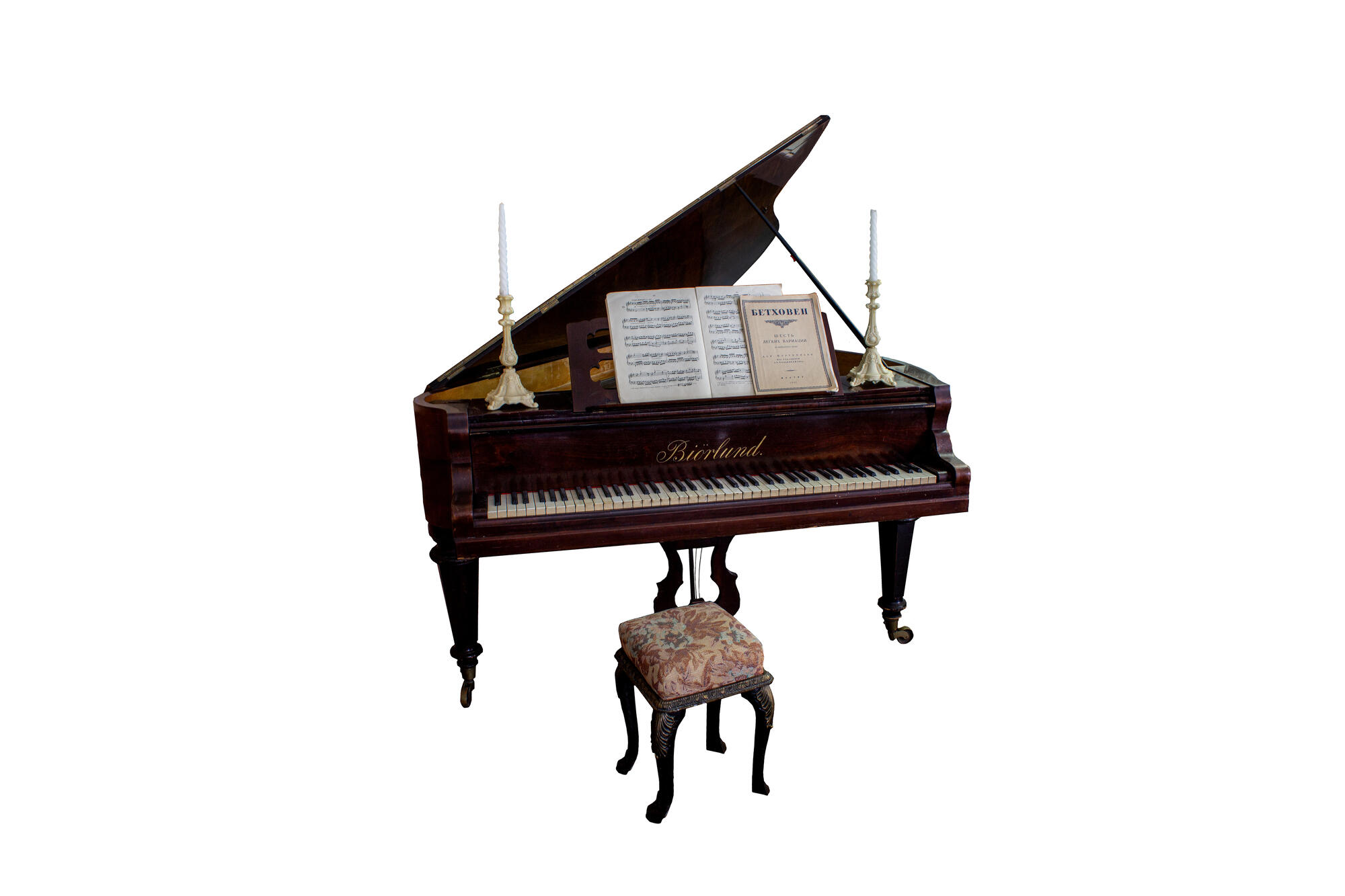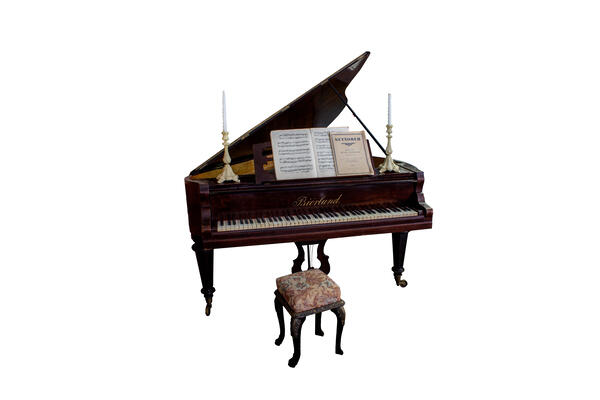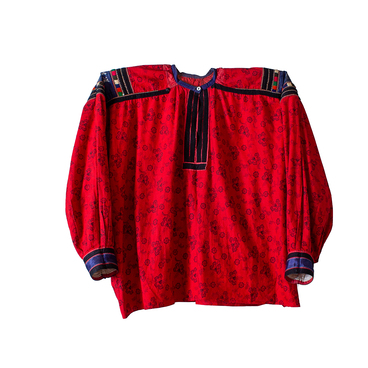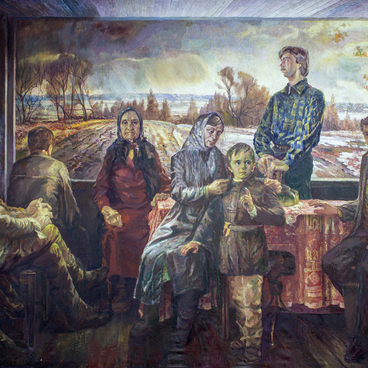The Museum Center houses a dark brown Biörlund baby grand piano, which belonged to Inna Kozlova, a mathematics teacher at Kotovsk secondary school No. 1. The instrument has classic white and black keys, and its golden-colored pedals are carved from wood. The grand piano has three legs with castors. The upper part of the piano holds a wooden sheet music stand, decorated with artistic wood carving.
The Russian word ‘royal’ for a grand piano comes from the French language and means ‘royal’. This musical instrument, like the piano, is a variety of the pianoforte. Its strings, soundboard and mechanical part are placed horizontally, and the body has a curved, wing-shaped form. When a musician presses down a key, it makes a special felt-covered hammer press against the piano strings, making a musical note. Unlike the piano, the sound of the grand piano is more expansive and richer in tone, with expressive note transitions, and the instrument has a more sensitive keyboard and a wider frequency range.
The wing-shaped grand piano was first presented in 1709 by Italian maker of musical instruments Bartolomeo Cristofori — the court harpsichord master of the Grand Duke Ferdinando Medici — at a reception at the Palazzo Pitti in Florence. Watching street cymbalists play, Cristofori noticed that when they hit the strings with soft mallets, they extracted a truly expressive sound. He took the structure of a harpsichord and remade it into a fundamentally new mechanism, which produced the sound by striking strings with soft hammers. The invention made it possible to change the strength of the sound when playing. Cristofori called the first piano ‘Gravicembalo col piano e forte’, which means ‘harpsichord with soft and loud’.
Until the late 18th century, pianos were constantly improved, and by the early 19th century, they gradually replaced the once-popular harpsichords and clavichords. In 1821, instrument maker Sébastien Érard made one of the key changes in the construction of the piano by inventing a repetition lever for the double-escapement action. The lever allows for repetition without the necessity of the key rising back to the rest position. It was this built-in mechanism that became the main distinguishing feature of pianos and made it possible to single them out as a separate type of musical instrument.
Europe, America and Russia launched the production of grand pianos in the 1850s. By the early 20th century, the instruments took their present shape.
The Russian word ‘royal’ for a grand piano comes from the French language and means ‘royal’. This musical instrument, like the piano, is a variety of the pianoforte. Its strings, soundboard and mechanical part are placed horizontally, and the body has a curved, wing-shaped form. When a musician presses down a key, it makes a special felt-covered hammer press against the piano strings, making a musical note. Unlike the piano, the sound of the grand piano is more expansive and richer in tone, with expressive note transitions, and the instrument has a more sensitive keyboard and a wider frequency range.
The wing-shaped grand piano was first presented in 1709 by Italian maker of musical instruments Bartolomeo Cristofori — the court harpsichord master of the Grand Duke Ferdinando Medici — at a reception at the Palazzo Pitti in Florence. Watching street cymbalists play, Cristofori noticed that when they hit the strings with soft mallets, they extracted a truly expressive sound. He took the structure of a harpsichord and remade it into a fundamentally new mechanism, which produced the sound by striking strings with soft hammers. The invention made it possible to change the strength of the sound when playing. Cristofori called the first piano ‘Gravicembalo col piano e forte’, which means ‘harpsichord with soft and loud’.
Until the late 18th century, pianos were constantly improved, and by the early 19th century, they gradually replaced the once-popular harpsichords and clavichords. In 1821, instrument maker Sébastien Érard made one of the key changes in the construction of the piano by inventing a repetition lever for the double-escapement action. The lever allows for repetition without the necessity of the key rising back to the rest position. It was this built-in mechanism that became the main distinguishing feature of pianos and made it possible to single them out as a separate type of musical instrument.
Europe, America and Russia launched the production of grand pianos in the 1850s. By the early 20th century, the instruments took their present shape.



